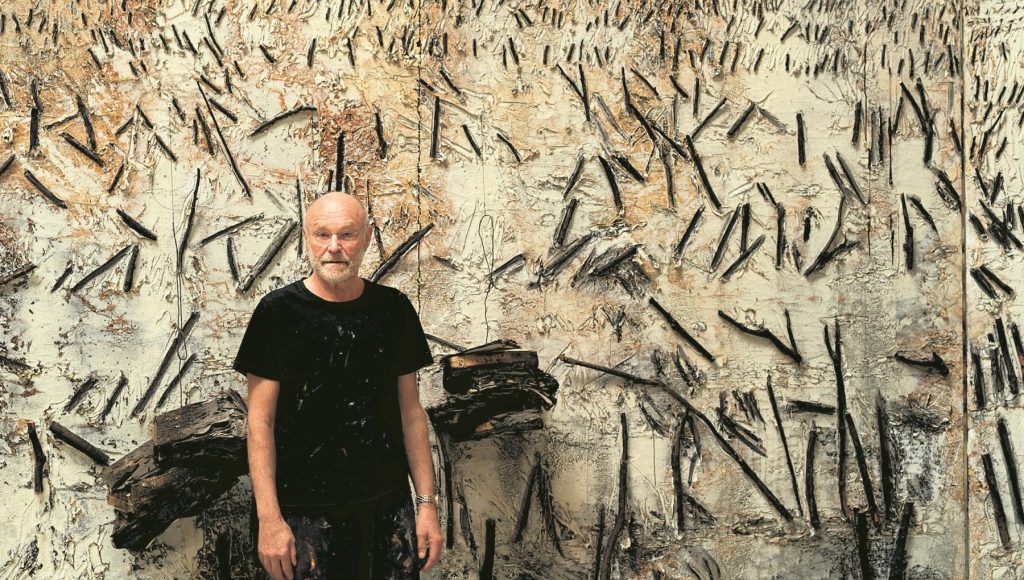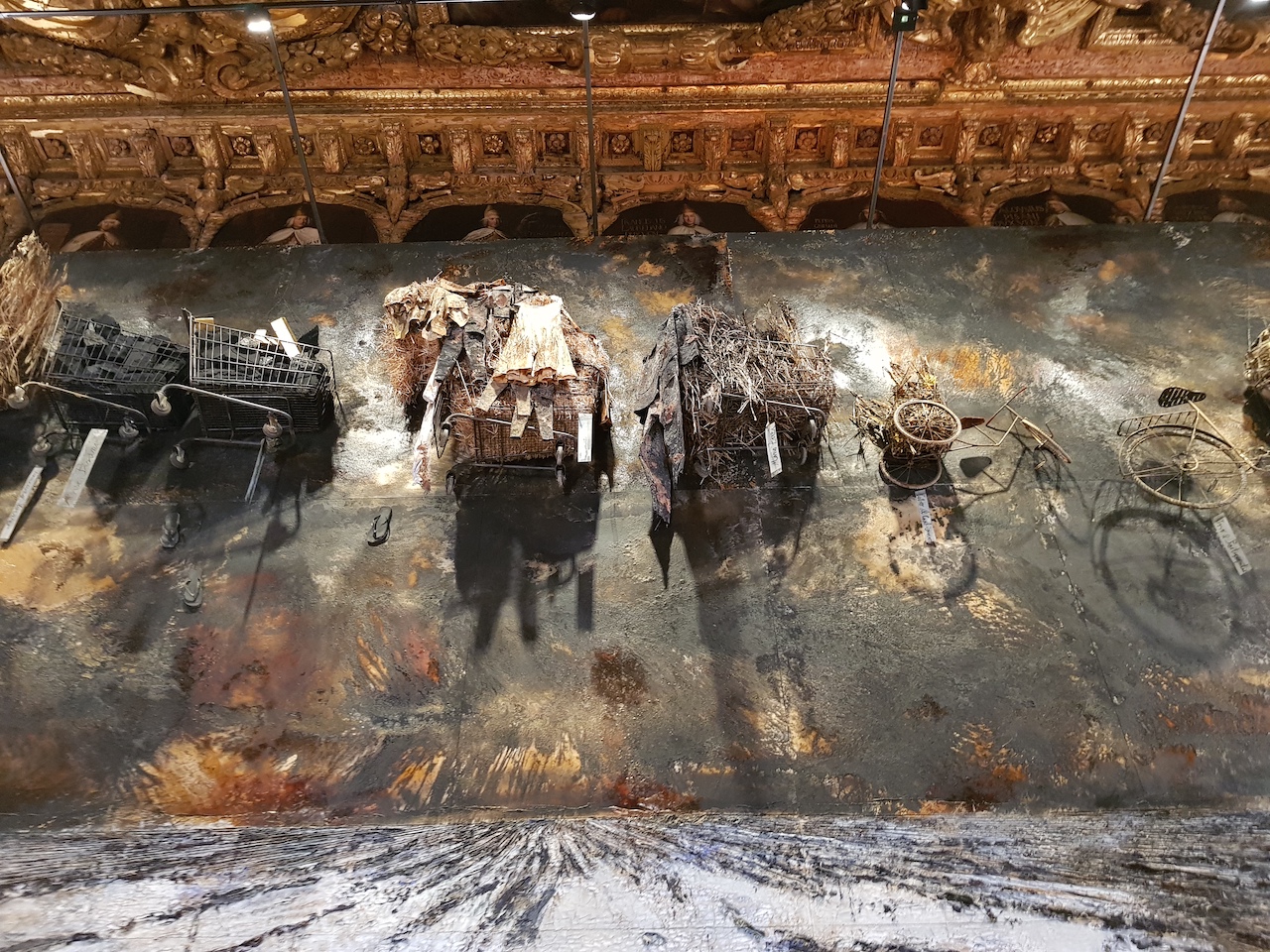
With a quotation from the Italian thinker Andrea Emo Capodilista (1901-1983) ‘These writings, when they are burnt, will finally give a little light’, the German artist Anselm Kiefer (born 1945 in Donaueschingen) titles his imposing and grandiose presence at the Doge’s Palace as part of the MUVE Contemporary 2022 project.
A brave, powerful, almost titanic artistic endeavour, carried out over the pandemic years, that celebrates the monumentality of the pictorial cycles of late-1500s Venetian masters (Tintoretto, Veronese, Palma the younger, Vicentino, and others), who decorated the Doge’s Palace after the fire of 1577. This site-specific operation has been well received by the critics and by the international press, who visited the Palazzo on the Biennale’s inauguration days all the way down to the Sala dello Scrutinio, which we found clad in panels painted by the German artist. What is the connection, the cross-reference between Kiefer’s extremely modern art and that of the old maestros?

A general accordance is in the use of gold, as well as in the choice of large-format art. If we look closer, though, we’ll see something unusual that will help us create a more sophisticated itinerary. Here’s my first impression: enter the Sala dello Scrutinio and look for the only Duke of Venice ever sentenced for treason: Marin Falier. A black drape will show which one it is. Near the top rung in the hall, my eyes meet Kiefer’s floating shopping carts. There’s more than groceries in them: price tags bear the name of the dukes, creating the impression of some sort of dignified parade. I step back and look in awe at the open coffin, a nod to the story of Saint Mark’s body. I turned 180 degrees, and above Vicentino’s Battle of Lepanto, Kiefer placed a majestic flag of Saint mark: red and gold stand out over a black background, like blood gushing out of a wound. On the lower rung, Anselm Kiefer pictures the Palazzo’s façade set ablaze – a memento of the many fires of the past.